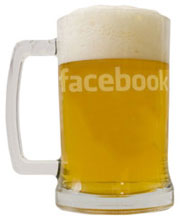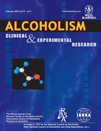Blog
Search
Blog
Minnesota Lawmakers Consider Charging for Harm

Members of the Minnesota House of Representatives are considering a bill that would raise taxes on alcohol, and increase funding to mitigate costs related to countering alcohol harm. The bill, sponsored by Rep. Karen Clark (DFL - Minneapolis) and Rep. Tina Liebling (DFL - Rochester), would raise the state tax rate by 3.5 cents a glass on beer, 4 cents a glass on wine, and 10 cents a glass on spirits. Money generated by the tax would go into an "Alcohol Health and Judicial Impact Fund," with half the money dedicated to judicial and public safety costs, and the other half to chemical dependency treatment. Raising taxes on alcohol is one of the most effective ways to reduce the amount of alcohol-related harm in communities. It is also helps the economy by providing revenue for government programs that are necessary to mitigate alcohol-related harm. Read more about Alcohol Justice's Charge for Harm campaign here.
New Zealand Study Finds Alcohol Ads on Social Media 'Hard to Regulate'
 A recent New Zealand study found that social media extended young people's drinking habits. According to researcher Antonia Lyons, "Facebook was embedded in these people's drinking cultures. They used Facebook to gain information about drinking, places, people, products to organise when they go out, to share photos about drinking ... to interact while engaging in a drinking session. They use it to connect with alcohol brands and products and to receive alcohol promotions." The report found that alcohol advertising is so seamlessly blended into social media and smartphone technology that government will struggle to regulate it. According to the authors, the viral and peer-to-peer nature of such promotion makes New Zealand's codes about displaying excessive consumption of alcohol, or targeting minors in alcohol advertising, particularly difficult to enforce. To read the Alcohol Justice report on alcohol advertising and Facebook, click here.
A recent New Zealand study found that social media extended young people's drinking habits. According to researcher Antonia Lyons, "Facebook was embedded in these people's drinking cultures. They used Facebook to gain information about drinking, places, people, products to organise when they go out, to share photos about drinking ... to interact while engaging in a drinking session. They use it to connect with alcohol brands and products and to receive alcohol promotions." The report found that alcohol advertising is so seamlessly blended into social media and smartphone technology that government will struggle to regulate it. According to the authors, the viral and peer-to-peer nature of such promotion makes New Zealand's codes about displaying excessive consumption of alcohol, or targeting minors in alcohol advertising, particularly difficult to enforce. To read the Alcohol Justice report on alcohol advertising and Facebook, click here.Take Action: Endorse GAPA's Statement of Concern
The Global Alcohol Policy Alliance (GAPA) is appealing to the public health community to endorse a Statement of Concern regarding Big Alcohol's attempt to influence the World Health Organization (WHO) Global Strategy to Reduce the Harmful Use of Alcohol. In October 2012, thirteen of world’s largest alcohol producers attempted to falsely position themselves as defenders of effective alcohol policy by issuing a set of "commitments" regarding the WHO Global Strategy. The GAPA Statement of Concern details the alcohol industry's lack of support for effective alcohol policies, its misinterpretation of the Global Strategy’s provisions, and its constant lobbying to defeat effective public health measures around the globe. Qualified professionals and organizations worldwide may review the Statement of Concern and tell the WHO Director General to refuse industry influence here.
Study: Alcohol Brand Preferences of Underage American Youth
 The most popular alcohol brands of underage drinkers in the U.S. come from Anheuser-Busch InBev, Diageo, MillerCoors, and Brown-Forman, according to a study in the February 2013 issue of Alcoholism: Clinical and Experimental Research that exposed brand-specific consumption patterns. The top preferred brands reported by underage drinkers were Bud Light, Smirnoff malt beverages, Budweiser, Smirnoff vodkas, Coors Light, and Jack Daniels. The top 25 brands represented in the study accounted for approximately half of all alcohol consumed by volume. Click here to read the article abstract.
The most popular alcohol brands of underage drinkers in the U.S. come from Anheuser-Busch InBev, Diageo, MillerCoors, and Brown-Forman, according to a study in the February 2013 issue of Alcoholism: Clinical and Experimental Research that exposed brand-specific consumption patterns. The top preferred brands reported by underage drinkers were Bud Light, Smirnoff malt beverages, Budweiser, Smirnoff vodkas, Coors Light, and Jack Daniels. The top 25 brands represented in the study accounted for approximately half of all alcohol consumed by volume. Click here to read the article abstract. More Articles ...
Help us hold Big Alcohol accountable for the harm its products cause.
| GET ACTION ALERTS AND eNEWS |
STAY CONNECTED    |
CONTACT US 24 Belvedere St. San Rafael, CA 94901 415-456-5692 |
SUPPORT US Terms of Service & Privacy Policy |
Copyright © 2025 Alcohol Justice. All Rights Reserved.
Joomla! is Free Software released under the GNU General Public License.


